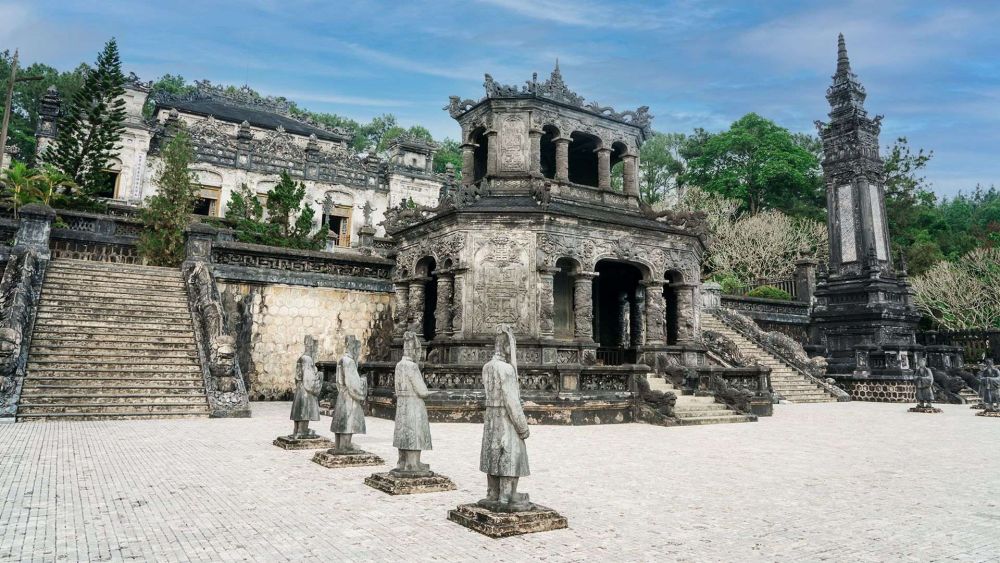

The Tomb of Emperor Khai Dinh, located in Hue, Vietnam, stands as a unique testament to the Nguyen Dynasty's architectural innovation and fusion of styles. Constructed over a period of 11 years from 1920 to 1931, the tomb is the resting place of Emperor Khai Dinh, the 12th ruler of the Nguyen Dynasty. Unlike the traditional Vietnamese royal architecture, the tomb is a blend of Eastern and Western designs that epitomize the cultural influences of the colonial era in Vietnam.
Emperor Khai Dinh ascended to the throne during a period when Vietnam was under French colonial rule. His reign was marked by a level of cooperation with the French that was unpopular with many of his subjects. This cooperation influenced the design of his tomb, which integrates elements from Vietnamese, Chinese, and European architectural styles.
The tomb itself is built on a hillside in the Chau Chu mountain, near the ancient capital of Hue. It is characterized by its grandiothus design, intricate interior mosaics made from broken porcelain and glass, and its imposing concrete exterior. Despite his short reign and the controversies that surrounded it, the tomb has become one of the most popular tourist attractions in Hue, reflecting the complex history and cultural diversity of Vietnam.
Hue has long been a centerpiece of Vietnamese culture, history, and tourism. As the former imperial capital of the Nguyen Dynasty for over a century, the city's monuments, including the Citadel and the tombs of several emperors, have drawn visitors from all over the world. Tourism significantly picked up in the late 20th century after Hue's Complex of Monuments was designated a UNESCO World Heritage Site in 1993.
Since the UNESCO designation, the city has seen continuous growth in tourism. Efforts have been made to preserve and restore its historic sites, including the Tomb of Emperor Khai Dinh, ensuring that they remain an integral part of the Vietnamese cultural heritage showcased to visitors.
In recent years, tourism in Hue has evolved with global trends. There is a growing preference for sustainable and experiential travel, with tourists seeking immersion in the local culture, cuisine, and day-to-day life. The city of Hue has capitalized on this by offering bicycle tours, culinary experiences, and homestays which allow tourists to engage with the community.
Heritage education has also become a significant draw, with travelers interested in the rich history of the Nguyen Dynasty and the architectural splendors of the era. Hue provides an excellent backdrop for this educational tourism, with well-preserved monuments that span centuries of Vietnamese history.
Additionally, digital innovation in tourism has taken root in Hue. Amid the global pandemic, virtual tours and online experiences have become more common, offering glimpses of Hue's historic sites, including the Tomb of Emperor Khai Dinh, to those unable to visit in person. As travel restrictions lift, a blend of these virtual experiences with traditional tourism is expected to continue.
The Tomb of Emperor Khai Dinh remains one of Hue's most visited attractions and a focal point for understanding Vietnam's complex history and evolving tourism landscape.